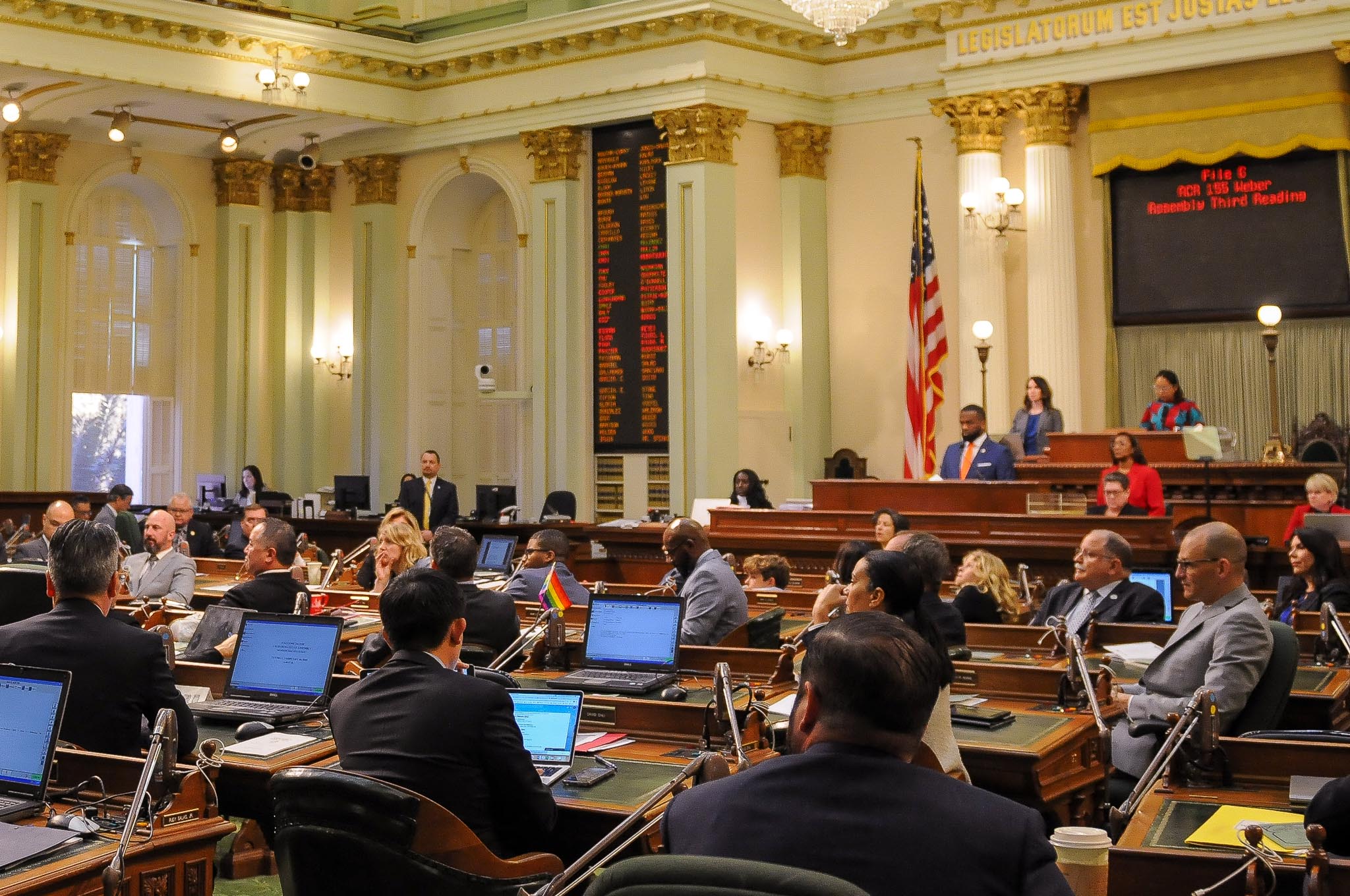
California State Capitol. (Photo: Kevin Sanders for California Globe)
Frequently Asked Questions About California Bill Amendments
Can amendments be made to all legislative measures?
By Chris Micheli, January 21, 2024 1:25 pm
What is an amendment? It is defined by the Office of Legislative Counsel as an alteration to a bill, motion, resolution, or clause by adding, changing, substituting, or omitting language.
Can amendments be made to all legislative measures? Yes, they can be made to bills, resolutions and constitutional amendments. They can also be made to motions.
Can an urgency clause be added to any bill? Under Article IV, Section 8(d) of the state Constitution, “an urgency statute may not create or abolish any office or change the salary, term, or duties of any office, or grant any franchise or special privilege, or create any vested right or interest.”
Can a bill returning on concurrence be amended? A bill cannot be amended when it returns to its house of origin for a concurrence vote. The amendment(s) from the other house can be concurred in or not concurred in (which results in a conference committee to resolve the differences between the two versions).
Is submitting bill amendments the same process in both houses? The Assembly requires amendments to be submitted by 5 pm or the close of session the day before a deadline. The Senate does not have the same rule.
Do committees adopt bill amendments? Committees actually make motions that a bill be passed with the recommendation that the floor adopt the specified amendment(s) to a measure.
Do bill amendments need a majority vote of a committee or the floor for adoption? Amendments to a measure can be made by a majority vote of those present and voting, rather than a majority of the committee or floor members.
Can a bill be amended during the 30 days following its introduction? The Assembly has a different interpretation of the 30-day wait period contained in Article IV, Section 8(a) of the Constitution than the Senate does. Once a bill has been referred to committee, the Assembly permits pre-committee author’s amendments to bills within the 30-day period, while the Senate does not permit this.
Must all amendments be germane to the original bill? While technically true, germaneness is determined on the floor by a majority vote of the house’s membership. According to the Rules, although the Legislative Counsel may be asked to opine on germaneness, the matter is subject to final determination by the full Assembly or the Senate Committee on Rules.
Can floor amendments be made at any time? There are limitations to making floor amendments. For example, under Assembly Rule 69, a motion to amend on the floor is not in order the last two days before the January 31 deadline or the last seven days before the interim recess or the final recess, unless this rule is suspended by a 2/3 majority vote. The rule does not apply to adding or deleting an urgency clause or adopting “chaptering” amendments.
Can a bill be amended to just add a coauthor? Under Joint Rule 9, an amendment is not in order when all that would be done to the bill is the addition of a coauthor, unless the Rules Committee grants prior approval.
What are the three ways to make amendments to measures? They are author’s amendments, committee amendments, and floor amendments.
Is there a format for amendments? Yes, amendments must be prepared, or approved as to form, by the Legislative Counsel.
How are author’s amendments made? Upon request of the author of a measure, the chairperson of the committee to which the measure (bill, resolution or constitutional amendment) has been referred may report to the full house (i.e., the Assembly or Senate) with the recommendation that amendments submitted by the author be adopted and the measure be reprinted as amended and re-referred to that committee.
When can an author make “author’s amendments” to his or her measure? They can occur either:
- Before a committee hearing – Amendments submitted by the author of the measure to the committee and submitted to the Senate or Assembly Desk by the Chair of the committee to which the measure has been referred are allowed pursuant to individual committee rules.
- At a committee hearing or on the Floor – Amendments in committee or on the Floor that are supported by the author can be made to a measure.
How are committee amendments made? They are adopted by roll call vote of the committee members. They may or may not be acceptable to the author.
When are committee amendments considered? They are technically considered upon their second reading, and the amendments may be adopted by a majority vote of the Members present and voting.
How are floor amendments made? Any Member may move to amend a measure during its second or third reading, and that motion to amend may be adopted by a majority vote of the Members present and voting. Floor amendments are not in order unless a copy of the proposed amendments has been placed upon the desks of the Members on the Floor.
What happens after floor amendments are submitted to the Desk? An analysis is prepared by the committee of origin and a copy of that analysis is distributed to each Member prior to the beginning of debate on adoption of the proposed amendments.
What happens in the Assembly with a substantially amended bill? Under Assembly Rule 77.2, the Speaker may re-refer a bill to a committee for two reasons: amendments adopted on the Assembly Floor include policy not previously heard in an Assembly committee, or a bill returned to the Assembly for concurrence in Senate amendments contains policy not previously heard in an Assembly committee.
What happens in the Senate with a substantially amended bill? Under Senate Rule 29.10, floor amendments to bills are handled based upon the policy committee’s analysis of the floor amendments.
What happens on the Senate Floor if the floor amendments are marked “re-write”? If the analysis is marked “re-write,” but the subject matter of the amendments is germane to the previous version of the bill, the measure is sent back to the Committee on Rules for consideration on re-referral.
What happens on the Senate Floor if the floor amendments are marked “new bill”? If the analysis is marked “new bill,” then the bill is withdrawn from the Senate Floor and sent to the Rules Committee, which may either (1) hold the bill or (2) refer the bill to the appropriate standing committee.
What are “hostile amendments”? Amendments proposed by another Member in committee or on the Floor that are not supported by the bill’s author are considered to be “hostile.”
What are “friendly amendments”? Amendments proposed by another Member in committee or on the Floor that are supported by the bill’s author are considered to be “friendly.”
What are “gut and amend” amendments? These are amendments to a measure that remove the current contents in their entirety and replace them with different provisions.
- California Proceedings for Conciliation - July 30, 2025
- Commencing Civil Actions in California - July 29, 2025
- Minors Enlisting in the Armed Forces - July 28, 2025








One thought on “Frequently Asked Questions About California Bill Amendments”